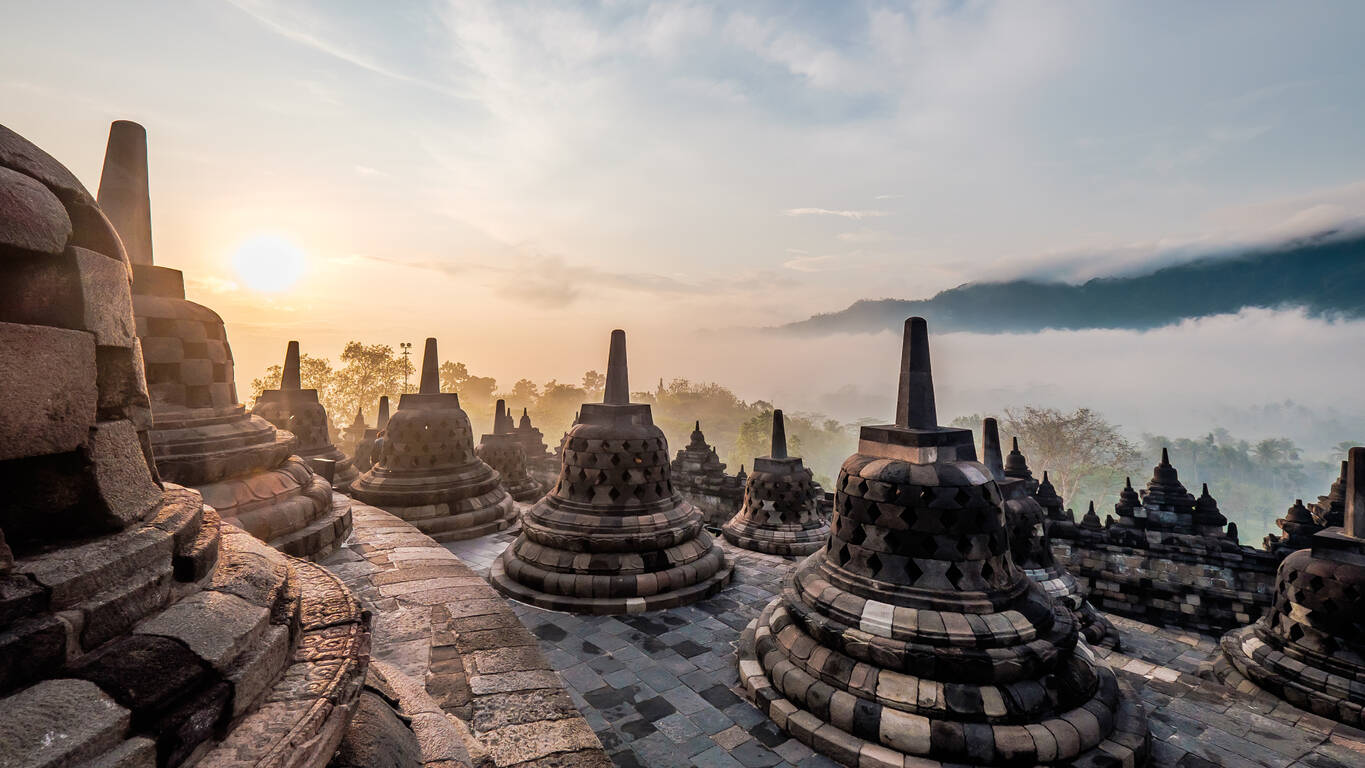The largest Buddhist temple in the world was once buried under a forest in Java

The world’s largest Buddhist temple is located in the old-world of Indonesia’s central Java. Called the Borobudur, it is a ninth-century Mahanaya Buddhist temple, high up in the hills. It was restored with the help of UNESCO in the 1970s, and is a sight that is much sought after by pilgrims and adventurers alike.
Inside the temple, you can find a circular platform, with 72 openwork stupas around it. Each of these stupas contains a statue of the Buddha. The magnificent work is truly a design masterpiece. History has it that it was constructed between 778 and 850 CE, and that it was previously buried under volcanic ash for many years. It was Thomas Stamford Raffles, an English Lieutenant Governor, who first discovered it by chance in 1814. Excavation works then began in 1907.

The first thing that you will see at the centre of this temple is a large single stupa sitting at a height of 115 ft above the base of the temple. The Borobudur Temple was built with about 2000000 cubic feet of gray volcanic stone.
This old-world religious site should ideally be explored in a pattern. So you need to start at the base, and follow a route that will take you through the relief panels that are carved in stone, and the statues of Lord Buddha. Each of the nine levels should be visited one after the other, and that is how you truly complete your visit to this place. You go clockwise through the various levels, and you can reach the top by walking a distance of 5 km. The large temple compound is alluring, to say the least, and it is hard to imagine that this massive structure was once buried under volcanic ash and forests.

